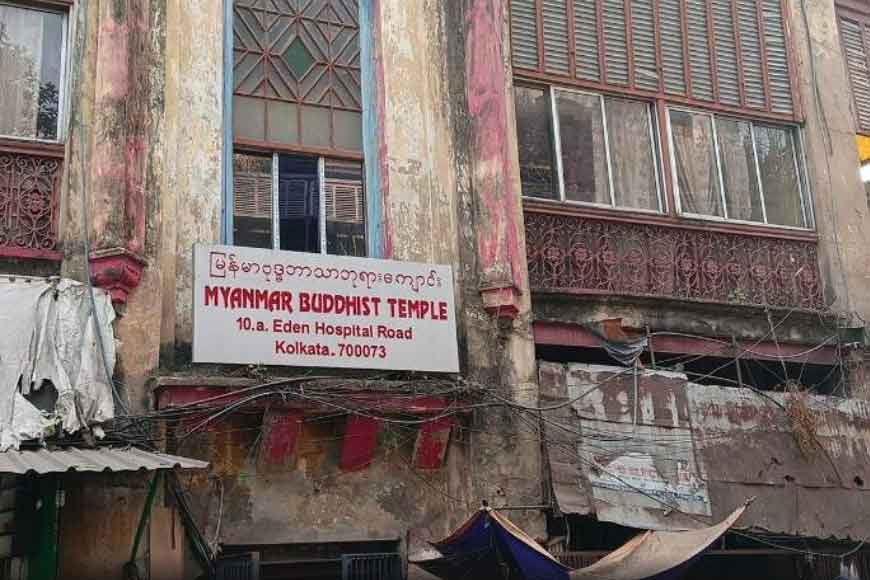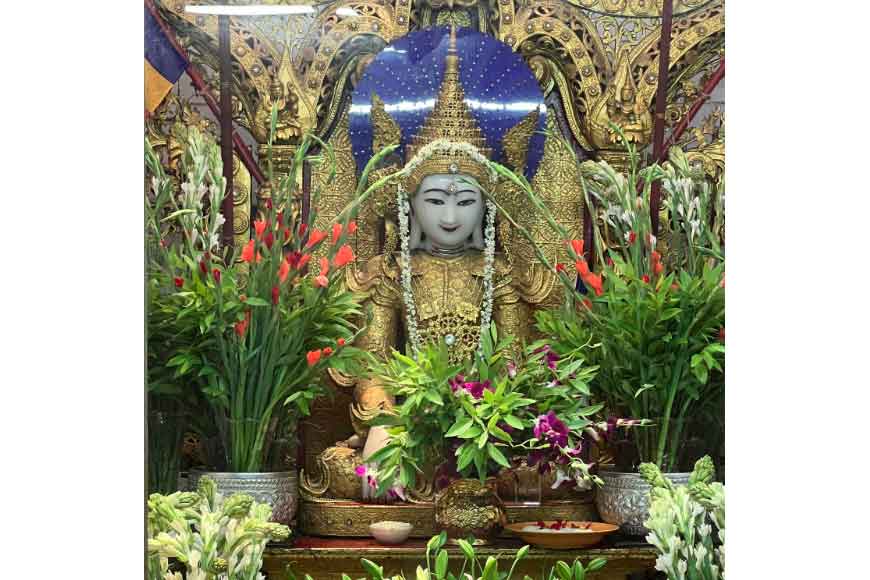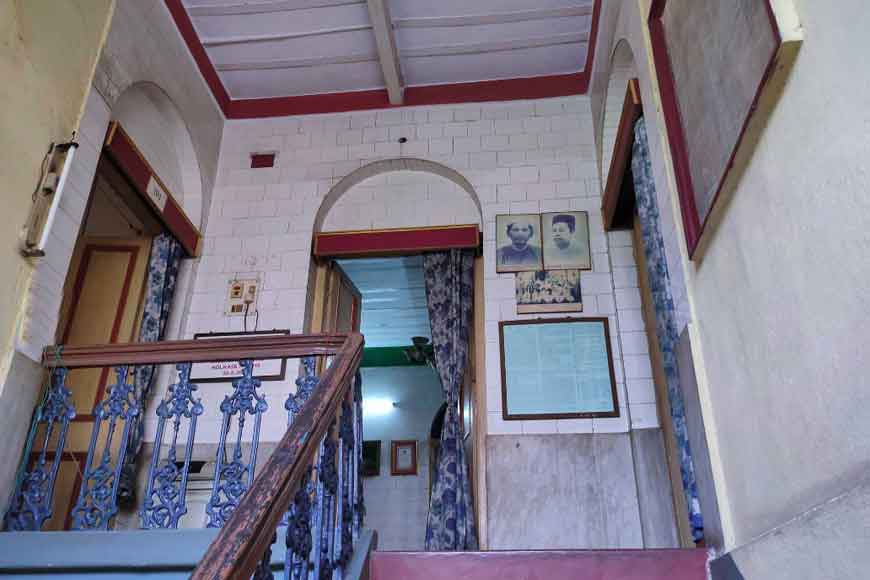This Burmese Buddhist temple in Kolkata is a must-visit - GetBengal story

A tiny Buddhist shrine is tucked away in a Burmese guest house in front of Central Metro Station's Gate No. 5. It's possible you've never seen it. Many people pass it by without noticing, and on a busy highway, it's easy to miss. Otherwise, the fascinating combination of traditional Burmese architecture with the English style is quite eye-catching. Another reason it is mostly unknown is because it is usually closed. It is the only temple in the entire city of Kolkata with Myanmar origins, and it is almost a century old.
The building once served as a guest house for Burmese students migrating to Kolkata for educational purposes. Surprisingly, among them were two Bengali students, Siddharth Shankar Sen and Amar Nath Sen. We know Bengal had a long-standing relationship with Myanmar from the stories of Sarat Chandra Chattopadhyay and other authors that trace the migration of Bengalis in search of work to Burma during British colonial rule. The Sen brothers were a duo who arrived in Kolkata in 1983. They did not stay in the Burmese guest house; however, they visited the temple often. Later, they joined the temple. Amar Nath Sen is affectionately known as Bhanu Da. The junior Sen frequently visited the temple to keep in touch with his Burmese roots. He said, “Even though I stayed in Park Circus, I visited the temple often. I had the fortune of marrying a woman who lives close by, further strengthening my connection to this temple.”

The Sen brothers started working at the temple only after COVID hit India.
Following the pandemic, the younger brother had to assume the role of temple priest as the older priest fell seriously ill. As a stopover on their journey, Buddhist pilgrims who arrive in Kolkata are housed in the guest house. "Only a few places house people with Burmese links, and even those numbers are dwindling, but whoever is left, they always make it a point to visit the temple," says Bhanu Da.
On Buddha Jayanti, the temple gets a whole makeover. The celebrations start early in the morning with a puja performed by the supreme abbot. A statue of Buddha is placed on a temporary dais, and a lot of Buddhist devotees start coming at 11 a.m., offering prasad to the idol of Buddha. An interesting ethnic mix of people visits the place. This includes Nepalese, Chinese, Tibetan, Lepcha, and Bengalis. Not all practicing Buddhists visit the place, as the number is dwindling in this city. People who respect and are curious about Buddhism and its practices visit the shrine too, to offer their prayers and make offerings. Apart from the Sen brothers, only a few had a Burmese connection, and one of them is Deric John Munro. His great-grandfather was a British officer posted in the then-Burman region, and his great-grandmother had a link to the Burmese royal family.
He fled to Kolkata during World War II with his parents. He was just four years old when he fled. He studied at St. Xavier’s College and later became a teacher at St. Paul’s School. He even mastered the dance of Kuchipudi and was a professor of dance at Rabindra Bharati University. He is married to a Bengali woman and speaks fluent Bengali now.

The biggest and perhaps most important part of the festivities in the temple is the food. There are both vegetarian and non-vegetarian options for people. Bhanu Da explains that people prefer to eat vegetarian food on Buddha Jayanti; hence, vegetarian food is prepared. The people who visit are offered traditional foods from Myanmar, like khowsuey. The meal starts with tea and cakes, and then everyone is provided with a full bowl of khowsuey. The non-vegetarian version includes eggs and chicken, while the vegetarian version not only excludes egg and chicken but is also cooked without any garlic or onion.
So the next time you are passing the temple, do pay a visit to the Sen brothers, who look after this Burmese Buddhist temple.











